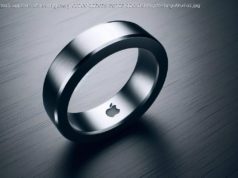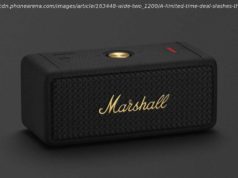Taking a look into the future with Intel Kaby Lake 7th-gen CPUs – including the forthcoming Core i9.
Kaby Lake is the latest generation of CPUs from Intel following the undeniably successful Skylake generation, and so far we can say it’s been a roaring triumph. Not only does Intel’s Kaby Lake microarchitecture fuel hardy gaming PCs, like the MSI Trident 3, but now it finally powers the latest version of the Surface Pro as well.
Here are all the details you need to know on the upcoming Intel Kaby Lake CPU revolution.
Last summer, Intel CEO Brian Krzanich confirmed that Kaby Lake chipsets had dispersed from factory conveyor belts and were subsequently sent to PC builders. In other words, Kaby Lake had formally arrived on our doorstep.
Since then, we’ ve seen companies as reputable as HP and Dell, Lenovo and Microsoft – even Corsair – release their own Kaby Lake-touting notebooks and desktop PCs. The spec has even made its way to rugged notebooks, like the Panasonic Toughbook 33, in an effort to bring mobile workforce users up with the times.
Of course, there were no shortage of spills leading into release of Kaby Lake. But, with most of the processors out in the open, we finally have the numbers we need to reach a consensus on the evidenced advantages Intel’s 7th-generation chips boast over their predecessors.
Outside of mobile, there are well over 20 Kaby Lake chips now on the market. From the Celeron G3930 to the Core i7-7700K, practically all the choices you had last generation are still present, albeit with better power efficiency and even a slight spec boost.
The Core i7-7700K is the flagship processor this time around, unlocked for overclocking as indicated by the discrete «K» moniker. Like the generations before it, the Kaby Lake architecture opts for a numerical naming convention: it consists of the “7” series CPUs to Skylake’s generation 6, Broadwell’s gen 5 and so on.
The i7-7700K is a quad-core, hyper-threaded CPU, which garners a fruitful 4.2GHz/4.5GHz core/boost clock. Although contained by extreme cooling conditions, early overclock results with the 7700K proved to be quite impressive, pulling off speeds of over 7GHz in some instances.
Still, pricing is where it counts, and you can take solace in the fact that the Intel Core i7-7700K still holds its own against AMD’s latest.
The Ryzen 7 1800X may boast more cores and threads than the 7700K, but Intel’s best consumer-grade option only costs the same $350 (£337, AU$498) as its predecessor, compared to the $499 (£500, around AU$650) 1800X. Plus, in terms of sheer clock speeds, the i7-7700K still dominates in its price range.
For Intel’s low- to medium-power range, there’s the Core i7-7500U, which initially leaked alongside the i7-7700K, but has since been found in the HP Spectre x360 as well as the Razer Blade Stealth. Intended for Ultrabooks on the top-end, this is a relatively high performance chipset, but still belongs to the «U» ultra-low voltage family.
This processor has two cores, four threads, and is clocked at 2.7GHz with a 2.9GHz turbo. Some of you might turn your noses up at dual-core laptop chipsets, but they still have a place in today’s world, particularly if you aim to save on battery.
Further on the mobile front, the higher-end Core m5 and m7 mobile chips of the past are now being integrated into the Y-series Intel Core family. These include the Core m3-7Y30, the Core i5-7Y54 and the Core i7-7Y75, which are being used in top-end laptops with fanless and convertible designs to complement the more power-hungry U-series processors.
Many of Intel’s 7th-generation selections also introduce Optane, a memory technology that brings hard drive speeds up to par with that of SSDs.
Where will these chipsets end up? Well, they’ re currently featured in a shortlist of notebooks, several of which we’ ve already reviewed. The aforementioned Razer Blade Stealth and HP Spectre x360 are joined by the likes of the Dell XPS 13 refresh among many others’ Ultrabooks, 2-in-1s and full-on laptops.
If you’ re wondering why the latest MacBook Pro still clings onto Skylake, the answer is simple: at the time of its release, there were no “H” series Kaby Lake processors yet for Apple’s laptop to take advantage of.
Fortunately, as earlier predicted, many of these showed up at CES 2017 having been implemented in gaming laptops from Acer and even one hardy contender from Alienware. Reports suggest that Apple’s next round of MacBooks (including a Pro refresh) are right around the corner – Kaby Lake and all – with an expected showing at WWDC 2017.
Cannonlake is likely to prove a much more exciting update than Kaby Lake. You see, Kaby Lake is very similar to the Skylake family we’re already using. This is not what we originally expected of the Skylake successor, but Intel has changed how its processor development works.
Since 2007, Intel has worked in a ‘tick, tock’ rhythm of upgrades, where one generation shrinks the die, followed by a generation that alters the architecture. That changed this year. As of 2016, Intel now uses a «Process, Architecture, Optimization» approach, and Kaby Lake represents that last, frankly least interesting stage.
It’s still a 14nm processor that’s fairly similar to Skylake throughout, and the desktop variants will use the same LGA 1151 socket. Unless something goes terribly wrong, Cannonlake will shrink Intel CPUs down to the long-promised 10nm die in 2017.
While there are some performance and efficiency improvements in store, it seems unnecessary for those with a Skylake CPU to upgrade to a Kaby Lake processor of the same level.
There are some distinct improvements involved in Kaby Lake, though. The first is fully integrated support for USB-C Gen 2. Skylake machines can offer this already, but need an extra third-party piece of hardware. Now, its “native”. Again, not exciting, but it is necessary.
Gen 2 USB 3.1 enables bandwidth of 10Gbps, rather than 5Gbps. Thunderbolt 3 support is in, too. In a similar vein, HDCP 2.2 support is native in Kaby Lake. This digital copy protection is a newer version designed for certain 4K video standards. Ultra HD Blu-ray is the key one, though 4K Netflix on Windows 10 also requires a Kaby Lake processor.
That’s right, Kaby Lake also offers integrated GPUs better-suited to 4K video. Thanks to a new media engine built on a Gen9 graphics architecture, users can edit real-time 4K video using nothing more than integrated graphics. For video consumption, the new VP9 and HVEC 10-bit decode will enable all-day 4K video streaming on a single charge.
Kaby Lake only officially supports Windows 10 among Microsoft’s operating systems. This is yet another attempt by Microsoft to push those lingering on Windows 7, or anything a little older, into the present.
It’s also worth considering the low-end Atom chipsets you’ll see used in very cheap laptops, Windows 10 tablets and low-power mini PCs Intel calls NUCs (Next Unit of Computing) .
Домой
United States
USA — IT Kaby Lake Intel Core processor: 7th-gen CPU news, features and release date






